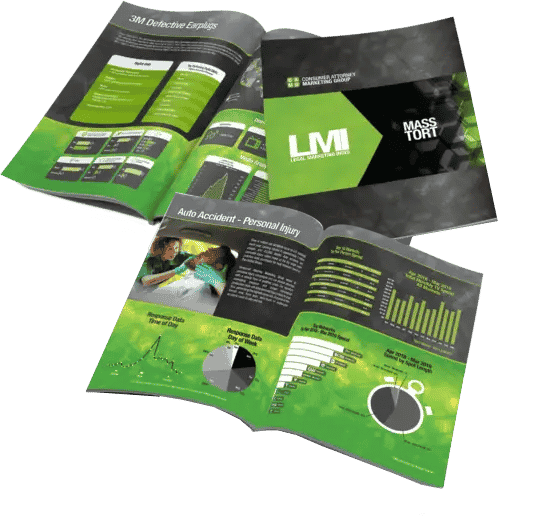Running a mass tort campaign requires managing many moving parts. Because of the volume of cases in a mass tort, the process can be overwhelming if you don’t have an effective system in place. Let’s walk through the best practices for each step, from intake through medical record review.
The Intake Process
The intake process serves two purposes. It’s the first step to prequalifying prospective clients. It’s also your first chance to make a positive impression and to build trust. Responsiveness and timeliness when responding to calls and requests are critical. According to an ABA Benchmark Study on Law Firm Intake Process, one in three calls went straight to voicemail and 42% of law firms took 3 to 4 days to respond to a voicemail or web form. When your firm doesn’t respond in a timely manner, you may lose that prospective client to a competitor.
Once callers have established contact with your firm, calls should be treated with empathy and professionalism. The ABA Benchmark Study showed over 40% of callers reported the people answering the phone were not at all empathetic.
The intake process is a two-way street, introducing prospective clients to your firm and prequalifying callers. Your firm needs an efficient way to prequalify prospective clients and to take leads from initial contact to signed contracts.
Best practices for intake and case screening:
- Provide 24/7 coverage
- Ensure every call is answered; do not abandon calls
- Connect your callers to a live representative immediately
- Limit hold times and avoid complicated phone trees
- Use current and efficient intake scripts
- Collect only what you need to move your case along
- Speed your client into contract
Handling intake in-house can challenge your firm’s personnel and resources. Many firms choose to outsource the intake process to increase productivity. Partnering with the right call center and legal intake experts can help you streamline the process, allowing you to increase your conversion rate and number of opened cases.
Getting Contracts Sent Out and Returned
Once you’ve completed the intake process, your goal is to convert qualified leads into signed clients. Some firms may choose to use digital contract packets and e-signatures. Digital copies are fast and efficient but there may be issues during medical record retrieval. Hard-copy contract packets avoid issues during medical record retrieval but will have slightly longer turnaround times and shipping costs.
Best practices for getting contracts sent out and returned:
- Assemble a packet that will yield a high conversion
- Less is more
- Include both HIPAA and HITECH forms; capture only signature, DOB & SSN
- Questionnaire should be just enough to follow up with medical records retrieval
- Overnight packets/dockets to clients
- Make a connection within the first 24 hours and call 3 to 5 times a day until contact is made
- Pursue aggressive follow-up. About 75% of cases sign within the first 14 days; nearly 90% sign within the first 30 days of intake
Speed, time, and efficiency are critical to contract processing. Follow-up is essential to getting contracts returned quickly. It’s important to understand the resources you need and staffing requirements. Outsourcing your contract processing can be an expedient solution to getting your contracts signed.
Medical Record Retrieval
Once you have received your signed contract packets, you will begin the initial medical records retrieval to determine if you have a case.
Best practices for retrieving medical records:
- Know whether to use HIPAA or HITECH
- Verify the request is sent to the right facility and using the correct method
- Confirm the facility has received the request and get information regarding when the request is expected to be fulfilled
- Review the records once they are received to make sure you have the records you need
- Remember to use a secure, HIPAA compliant process to manage medical records
Medical Record Review
Reviewing medical records is essential when you’re screening hundreds of mass tort plaintiffs and to understand the complexities of your case.
Best practices for medical record review:
- Bookmark and tag relevant information
- Arrange medical events in chronological order to identify proof of usage and injury for mass tort cases
- Identify any missing information, as well as whether the prospective client is eligible
- Get expert opinions, if needed
The Bottom Line
Running a mass tort campaign can challenge your staff and resources. Setting your intake criteria, prequalifying calls, handling contracts, and retrieving medical records all take great effort and oversight. Everything your firm does must be compliant with security and privacy standards. At CAMG, we offer seamlessly integrated services to move you through each step of the process, saving you time and money.
Find out more about our intake services, contract services or our medical records division by speaking with one of our sales associates at (800) 200-CAMG or reach out to us here .

